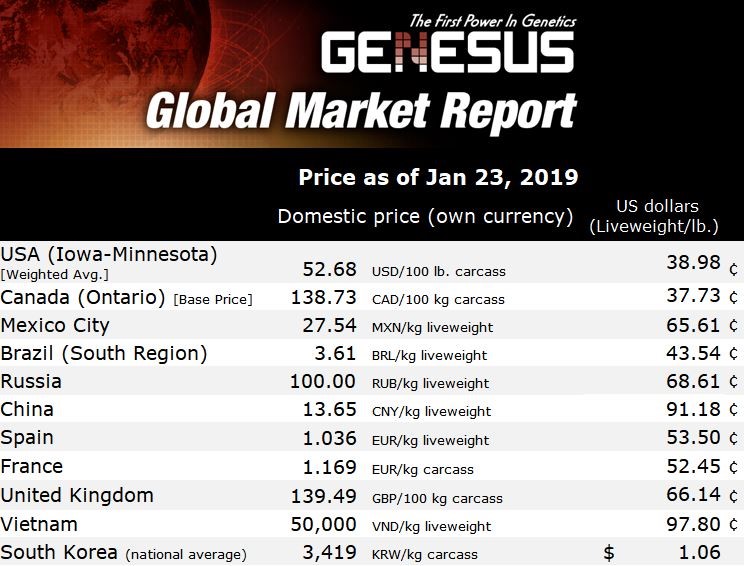



Genesus Global Market Report – Mexico
Mexico’s pig production is increasing, helped by improved genetics and also improved disease control although this remains a major challenge.
Structural changes are also boosting production with more large-scale units and integration that stretches from the supply of AI to retailing. Feed is relatively cheap and so are labour costs.
Between 2005 and 2016 the growth in pork consumption has averaged 4 percent per year. Yet, the domestic industry has been unable to meet this growing demand with production growth only averaging 2 percent per year based on data from USDA. As a result, increasing imports are having to offset the production deficit.
Mexico is a large consumer market with a population of 120+ million. Per capita consumption averages 19 kg and pork is consumed on a daily basis in a variety of dishes either as fresh or as processed, especially hams. Pork remains a lower cost alternative to beef while being price competitive with chicken. Pork continues to gain consumer confidence as a healthy source of protein.
Mexico is the fourth largest global importer of chilled and frozen pork after China, Japan and Italy. Since 2005 import volumes have grown by 9 percent per annum and there was a further growth of 19 percent in the first quarter of 2017. Trade is dominated by the United States that accounted for 85 percent of the total in the last two years although its share has been over 90 percent. The only other significant supplier is Canada. Mexican imports are dominated by chilled bone-in hams and shoulders that account for 75 percent of the total. Frozen boneless cuts account for a further 15 percent and are used in further processing. Imports include mechanically deboned meat (MDM).
From an American perspective while the new Free Trade Agreement was an important step forward, it’s only the first step. The US pork industry is still dealing with 20 percent retaliatory duties for product going into Mexico. In response to the US Section 232 steel and aluminium tariffs, Mexico increased duties on most US pork from zero to 20 percent in June. Nonetheless, Mexico exhibits a strong demand for US hams.
On the other hand EU pork exports also surged to Mexico and are expected to continue gaining momentum as Spain, Denmark and Germany take advantage of Mexico’s recently implemented duty-free pork quota.
Prices in Mexico continue steady for most of the market.







